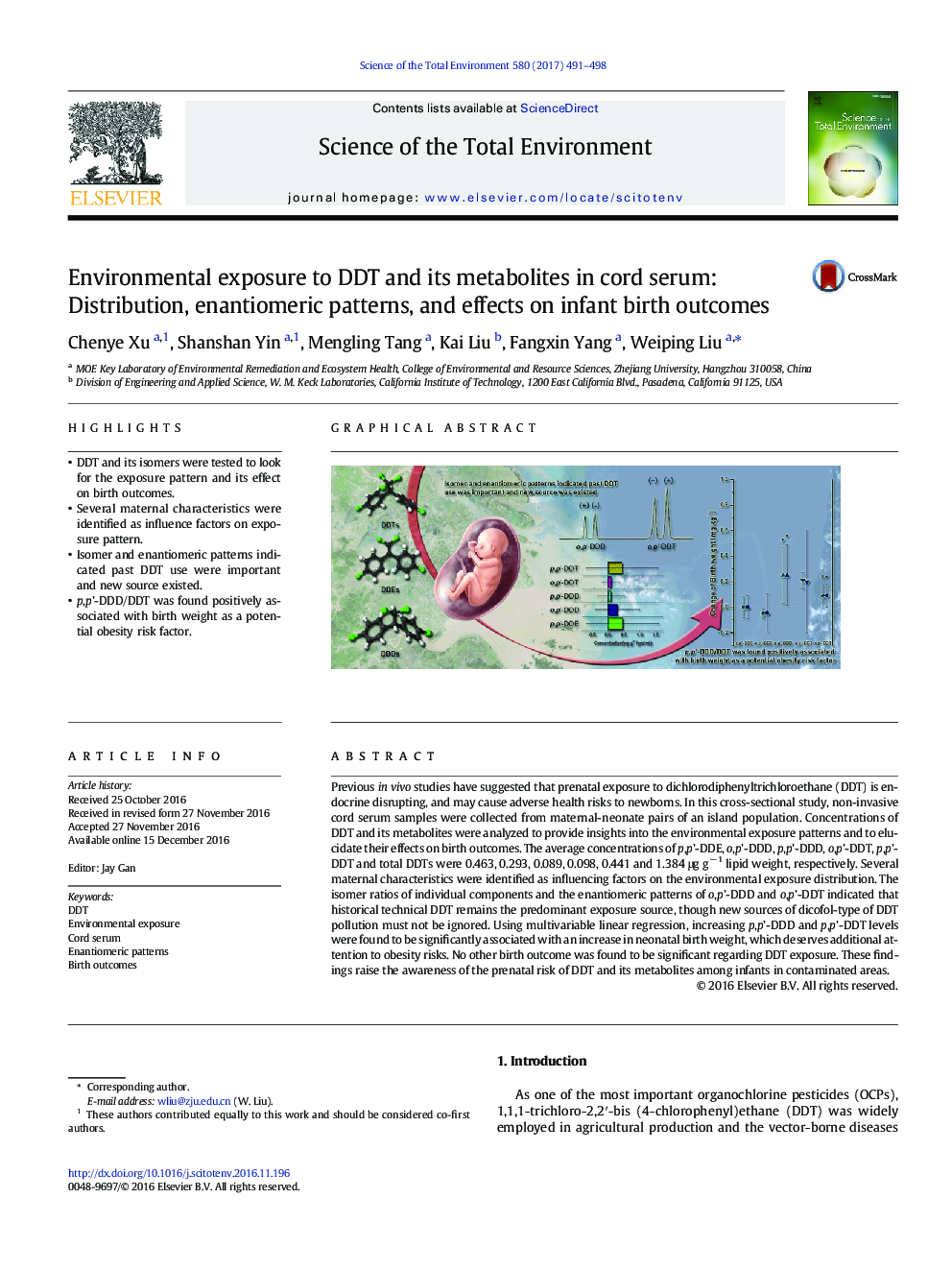| Article ID | Journal | Published Year | Pages | File Type |
|---|---|---|---|---|
| 5752090 | Science of The Total Environment | 2017 | 8 Pages |
â¢DDT and its isomers were tested to look for the exposure pattern and its effect on birth outcomes.â¢Several maternal characteristics were identified as influence factors on exposure pattern.â¢Isomer and enantiomeric patterns indicated past DDT use were important and new source existed.â¢p,p'-DDD/DDT was found positively associated with birth weight as a potential obesity risk factor.
Previous in vivo studies have suggested that prenatal exposure to dichlorodiphenyltrichloroethane (DDT) is endocrine disrupting, and may cause adverse health risks to newborns. In this cross-sectional study, non-invasive cord serum samples were collected from maternal-neonate pairs of an island population. Concentrations of DDT and its metabolites were analyzed to provide insights into the environmental exposure patterns and to elucidate their effects on birth outcomes. The average concentrations of p,p'-DDE, o,p'-DDD, p,p'-DDD, o,p'-DDT, p,p'-DDT and total DDTs were 0.463, 0.293, 0.089, 0.098, 0.441 and 1.384 μg gâ 1 lipid weight, respectively. Several maternal characteristics were identified as influencing factors on the environmental exposure distribution. The isomer ratios of individual components and the enantiomeric patterns of o,p'-DDD and o,p'-DDT indicated that historical technical DDT remains the predominant exposure source, though new sources of dicofol-type of DDT pollution must not be ignored. Using multivariable linear regression, increasing p,p'-DDD and p,p'-DDT levels were found to be significantly associated with an increase in neonatal birth weight, which deserves additional attention to obesity risks. No other birth outcome was found to be significant regarding DDT exposure. These findings raise the awareness of the prenatal risk of DDT and its metabolites among infants in contaminated areas.
Graphical abstractDownload high-res image (223KB)Download full-size image
